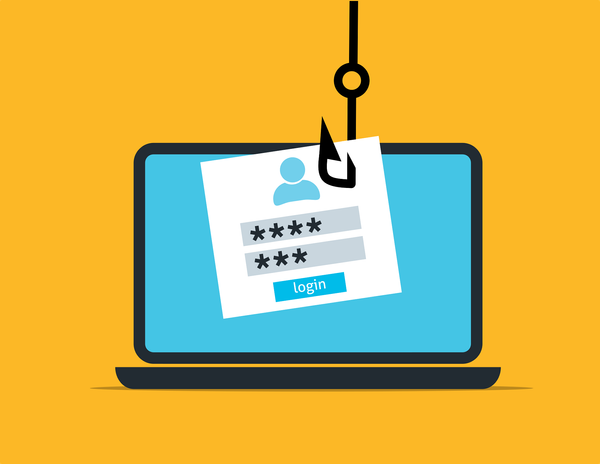Don't Get Scammed! Facebook Marketplace scams you should avoid

Facebook Marketplace has exploded in popularity, becoming the go-to platform for millions of people looking to buy, sell, or trade various items locally. From clothing and furniture to bikes and cars, Marketplace's hyper-local focus connects buyers and sellers right in their own neighborhoods with incredible ease and at no cost.
This convenience and zero fees have made Facebook Marketplace the most popular social commerce platform, with over 51% of social media consumers making their most recent purchase through Facebook's shopping channels. However, Marketplace's massive user base, low barriers to entry, and lack of robust vetting procedures have also made it an attractive hunting ground for scammers.
Did you know?
- In an average month, up to 1.228 billion online shoppers buy something on Facebook Marketplace.
- Up to 40% of Facebook's 3.07 billion monthly active users shop on Marketplace,
- An estimated 491 million, or 16% of active users, log in to Facebook for the sole purpose of shopping on Facebook Marketplace.
- 250 million sellers worldwide use Facebook Marketplace.
(Source: capitaloneshopping.com )
Common Signs of Facebook Marketplace Scams to Watch Out For. Check New Profiles Twice
It is common for scammers to create new accounts on Facebook Marketplace to avoid getting caught and remain anonymous. These accounts often have no established histories or reviews, making it difficult to verify their authenticity. Therefore, we recommend that you carefully examine the profile of any potential buyer or seller before engaging in any transaction to ensure their legitimacy.
Here is what to look for:
· Minimal Information: Be cautious of accounts with little to no information in their profile, such as a lack of profile picture, personal details, or activity history.
· Recently Created Accounts: Accounts created within the past few months raise suspicion as scammers often use new accounts for their schemes.
· Lack of Reviews or Ratings: Legitimate buyers and sellers on Facebook Marketplace tend to have reviews or ratings from previous transactions. Accounts without any reviews or ratings should be approached with caution.
· Suspicious Account Names: Watch out for accounts with names that appear randomly generated, contain unusual characters, or seem unrelated to the individual's identity.
· Inconsistent or Contradictory Information: If the information provided by the account holder seems inconsistent or contradictory, it could be a sign of a scam attempt.
While a new account alone does not necessarily indicate a scam, be cautious before engaging in any transactions. It's best to avoid the transaction altogether if the account holder's responses or behavior seem suspicious, such as offering very low prices, requesting prepaid shipping labels, asking for personal information, or asking to pay with gift cards, checks, money orders, untraceable payment method and immediate interest in the transaction.
Here are the most common Facebook Marketplace scams to watch out for:
A good experience buying or selling on Facebook Marketplace starts with identifying those who may want to ruin it. Whether you're the buyer or the seller, you should be aware of some common scams on Facebook Marketplace. Knowing and avoiding these fraudulent schemes helps you protect yourself and your money.
Scams that target buyers
Fake Listings and Non-Existent Items. One of the most common scams on Facebook Marketplace involves fraudsters creating counterfeit listings for items that don't exist. These scammers use attractive listings with unrealistically low prices to entice buyers. Once the payment is made, the scammer disappears without ever sending the promised item.
Fake or Compromised Accounts. Scammers often operate using fake accounts created solely for carrying out their schemes. In some cases, they may hijack and use accounts that initially belonged to real people. These accounts may have minimal information, activity history, or reviews, making them appear suspicious.
Bait and Switch Tactics. Fraudsters may advertise desirable items at great prices to lure potential buyers. However, when inquired about the advertised product, they claim it's suddenly unavailable and offer a more expensive replacement instead.
Fake Giveaways and Contests. You receive messages claiming you've won giveaways or contests. These are often ploys to steal your personal information or trick you into clicking malicious links. In some cases, scammers may demand payment for supposed "shipping fees" for the non-existent prizes.
Non-Delivery Scams. Scammers sellers list items they never intend to ship to buyers. After receiving payment, they disappear without ever sending the promised item. They may even attempt to defraud multiple buyers with a single false listing or sometimes no item at all.
Fraudulent Payment Methods. Scammers frequently try to coerce sellers into accepting unconventional payment methods such as gift cards, cryptocurrency, money transfer services like Western Union or MoneyGram, or peer-to-peer paying apps such as Zelle and Venmo. These methods are often untraceable and difficult to reverse, making them ideal for scammers to avoid detection and impossible for buyers to get back any money.
Faulty Product Scams. These scams come in two forms: sellers knowingly selling malfunctioning products and then disappearing after payment or buyers claiming to have received faulty items and demanding refunds without returning the product.
Rental Scams. Rental scams involve fake listings for apartments, properties, equipment, or tools, where scammers demand upfront payments or deposits. They may even ask for personal information like social security numbers under the guise of lease agreements or applications.
Advance Payment Scams. Scammers use high-demand items like vehicles to pressure buyers into making advance payments or deposits to reserve the item. They often create a false sense of urgency, claiming multiple offers or that the item will sell quickly.
Related: How to tell whether a Facebook ad is a scam. A closer look at the airport luggage sale fraud
Scams Targeting Sellers
Overpayment Scams. In this scam, the buyer intentionally overpays for an item and then requests the seller to refund the excess amount or pay a fake shipping company. However, the scammer's payment will eventually be reversed, leaving the seller at a loss.
Lost Package Claims. Some scammers will receive the item but claim they never received it, exploiting buyer protection policies. To safeguard against this, opt for shipping methods that require a signature upon delivery and provide tracking.
Fake Tracking Numbers. Scammers provide fake online tracking numbers to create the illusion that an item has been shipped when it hasn't, leaving the buyer without the purchased product.
Phishing Attempts. Scammers may send malicious links disguised as payment or shipping information to steal personal or financial data.
Impersonating Customer Service. Fraudsters may impersonate customer service representatives, claiming issues with an account or transaction to trick sellers into providing sensitive information or making payments.
QR Code Scams. Legitimate transactions on Facebook Marketplace do not require QR codes. Any request to scan a QR code should be considered a potential scam attempt to steal information or money.
To avoid becoming a victim of scams, follow some simple rules:
- For local transactions, try to meet the seller in person and inspect the item before making the payment.
- Use secure payment methods like PayPal or cash for in-person transactions.
- Never share your personal or financial information with someone you don't know or trust.
- Be cautious of deals that appear too good to be true and verify the seller's identity and reputation.
Related: Hackers Could Have Taken Over Your Facebook Account Using This Trick
I Got Scammed on Facebook Marketplace - What Can I Do?
If you've fallen victim to a scam on Facebook Marketplace, it's essential to take prompt action to minimize potential losses and prevent further harm. Here are some steps you should take:
1. Report the Scam to Facebook
Report the scammer's account, listing, and any messages or interactions to Facebook Marketplace. Provide as much detail as possible, including screenshots, transaction details, and any other relevant information. This will help Facebook investigate and take appropriate action against the scammer.
2. Contact Your Payment Provider
If you paid through a secure payment method like PayPal or a credit card, contact the provider immediately and initiate a dispute or claim. Explain the situation in detail and provide any supporting evidence you have. Many payment providers offer buyer protection programs that may help you recover your funds.
3. Report to Relevant Authorities
Depending on the nature and extent of the scam, you should report it to the appropriate authorities, such as your local police department or the Federal Trade Commission (FTC) in the United States. Provide them with all the details and evidence you have.
4. Change Your Passwords and Monitor Your Accounts
If you have shared any personal or financial information with a scammer, it is important to take immediate action to protect yourself. Start by changing the passwords on all accounts that may have been affected. Monitor your accounts closely for any signs of unauthorized activity, and consider placing a fraud alert or credit freeze on your credit reports. Bitdefender Digital Identity Protection is a useful tool to help you keep an eye on your personal data and detect any suspicious activity. Remember, scammers may not use the stolen information right away, so it is important to stay vigilant and keep monitoring your accounts for an extended period of time.
5. Spread Awareness
Share your experience with others to raise awareness about the specific scam you encountered. Post warnings in relevant Facebook groups or forums, and encourage others to be cautious when using Facebook Marketplace or similar platforms.
6. Seek Legal Assistance
If the scam involved a significant financial loss, consider consulting with a lawyer to explore your legal options. They can advise you on the best action and help you pursue any available legal remedies.
7. Use Scamio to Spot Potential Scams
Scamio is a tool that helps you identify scams and scammers online. You can use it to check Facebook profiles, listings, offers, QR codes or any text or situation to see if they might be a scam.
To use Scamio, just send it the texts, links, photos, QR codes or the description of what you want it to check. Scamio will then compare that information to its database of known scams and it will let you know if there is a risk that the thing you checked is a potential scam.
You can start chatting with Scamio right now, it is completely free, and you can access it on any device or operating system via your web browser, WhatsApp or Facebook Messenger.
tags
Author
Cristina is a freelance writer and a mother of two living in Denmark. Her 15 years experience in communication includes developing content for tv, online, mobile apps, and a chatbot.
View all postsRight now Top posts
How to Protect Your WhatsApp from Hackers and Scammers – 8 Key Settings and Best Practices
April 03, 2025
Outpacing Cyberthreats: Bitdefender Together with Scuderia Ferrari HP in 2025
March 12, 2025
Streamjacking Scams On YouTube Leverage CS2 Pro Player Championships to Defraud Gamers
February 20, 2025
How to Identify and Protect Yourself from Gaming Laptop Scams
February 11, 2025
FOLLOW US ON SOCIAL MEDIA
You might also like
Bookmarks







